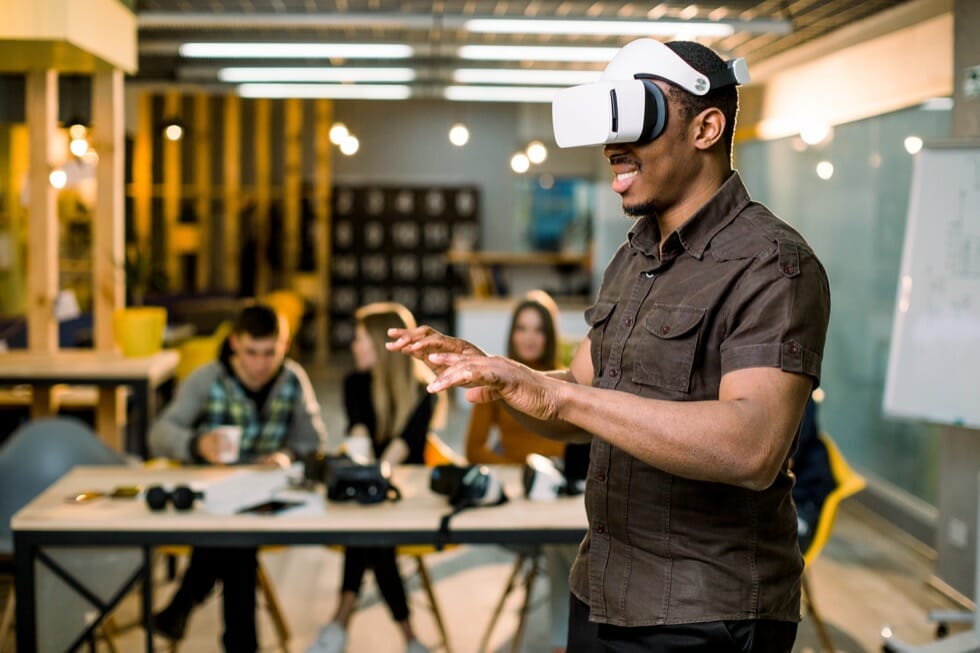Get ready for the metaverse as one of many AR/VR (augmented/virtual reality) UX trends for 2023! User experience is poised to expand from the web and mobile platforms to AR/VR and, eventually, into the metaverse. As a result, customer experience options are changing significantly.
For UX professionals, this means understanding the AR/VR impact on UX design for customers. Going forward as the metaverse gains steam, the UX role will expand into designing a customer experience in a fully virtual world of interactions, social connection, and commerce.
This guide describes the impact AR/VR have on UX today—and how the evolving metaverse may affect UX in the future.
Key Takeaways
- What is AR/VR’s impact on UX and the customer experience?
- What exactly is the metaverse?
- How will the UX designer role change for AR/VR and the evolving metaverse?
- Discover what you’ll need to know to adapt to future UX trends.
What is AR/VR’s impact on UX and the Customer Experience?
AR/VR are bridges that connect the physical world to a digital universe. Both AR and VR impact how customers perceive reality and are useful vehicles to deliver advertising and promote products for businesses of any kind.
Businesses are leveraging the power of AR/VR to bring their products to the customer virtually. Customers can create a virtual reality of their own for clothes, furniture, cars, jewelry—you name it, and it can be made available to the consumer immediately.
UX design trends are changing to present the customer experience through a more varied lens. AR/VR both leverage the device’s computing options to generate superimposed 2D/3D interfaces that enable customers to experience working, shopping, or even traveling in real-time while sitting on their favorite chair at home.
What exactly is the Metaverse?
The metaverse is a virtual world where customers, businesses, friends, and communities can interact with each other and digital objects while wearing AR/VR headsets. The metaverse intends to create an alternate reality for people to connect socially and perform their everyday tasks. For UX designers, it’s a second world of customer experience.
The metaverse is hypothetical now, but it is rapidly developing with advances in AR/VR technology. The metaverse represents potentially endless opportunities for UX designers, customers, and businesses. It won’t be long until businesses and customers are fully taking part in an alternate world that enables virtual interactions as if the user were physically present.
How will the UX designer role change for AR/VR and the evolving metaverse?
UX designers will create user experiences within a virtual world. They will design interactions between objects, spaces, and beings. Buttons, menus, signs, and other standard interactive features will need to be accessible and functional in this new virtual reality world or new options will need to be created.
Consider the challenges facing UX design as customer experiences develop where users, businesses, and objects interact with each other using avatars and varied communication options. The future virtual customer will experience a surface-less space that has multiple input options. User actions in AR/VR and metaverse will be all virtual. UX will determine the design of functionality in the metaverse.
The importance of designing for multiple input types fundamentally changes how customers interact with systems, products, businesses, and each other. Additionally, multiple inputs change how UX designers create a reaction. It’s time for UX design to prepare for real-time shared experiences between users within a virtual world.

